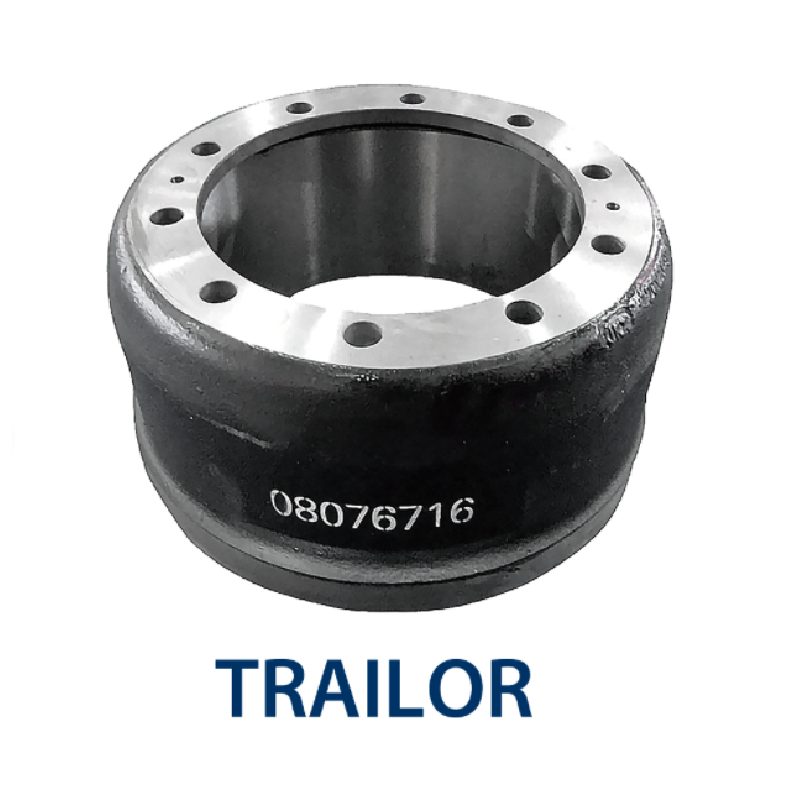Dec . 16, 2024 18:14 Back to list
Do Brake Drums Get Hot During Use and What Should You Know?
Should Brake Drums Get Hot?
When it comes to vehicle maintenance and performance, understanding the various components of the braking system is essential for safe driving. One critical part of this system is the brake drum, which plays a significant role in slowing down or stopping your vehicle. A common question among drivers and mechanics alike is whether brake drums should get hot during operation, and if so, to what extent.
The Function of Brake Drums
Brake drums are integral to drum brake systems, which are widely used in many vehicles, especially trucks and older passenger cars. When the driver presses the brake pedal, the brake shoes pressed against the inner surface of the brake drum create friction, which slows the wheel's rotation. This friction, in turn, generates heat, because energy can't be created or destroyed; it can only be transformed from one form to another. Therefore, it is normal for brake drums to heat up during operation.
Understanding Temperature Ranges
The actual temperature that brake drums can reach during normal operation varies depending on several factors, including the type of brake material, driving conditions, and the loading of the vehicle. Typically, during regular driving, brake drums can reach temperatures between 150°F to 400°F (approximately 65°C to 200°C) under normal conditions. However, in heavy or aggressive braking situations — such as descending steep hills or in stop-and-go traffic — the temperature can rise significantly higher.
The Impact of Excessive Heat
While some heat is expected and acceptable, excessive heat can lead to several problems. If the brake drums become too hot, they can warp, crack, or wear unevenly, which compromises braking performance. In extreme cases, it can even result in brake fade, where the brakes lose effectiveness due to overheating. This condition can be particularly dangerous, as it may lead to longer stopping distances and an increased risk of accidents.
Signs of Overheating
It is crucial for drivers to be aware of the signs that their brake drums may be overheating. Some common indicators include
1. Squealing or grinding noises These sounds often signify that the brake shoes are worn down or that there is an issue with the drum itself.
should brake drums get hot

2. Vibrations or pulsations If the vehicle shakes or vibrates when braking, it may indicate warped brake drums.
3. Burning smells A strong burning odor may indicate overheating components, which can lead to more severe problems if not addressed promptly.
Maintaining Brake Drums
To prevent brake drums from overheating, regular maintenance is essential. This includes
- Inspecting brake components Regular inspections allow mechanics to identify and fix wear issues before they become significant problems.
- Keeping brake fluids at optimal levels Brake fluid absorbs heat, and maintaining proper levels is crucial for effective heat dissipation.
- Avoiding aggressive driving Smooth acceleration and braking can help minimize the heat generated during normal driving conditions.
- Upgrading components If you're frequently driving in demanding conditions, considering high-performance brake components might be beneficial. These can better withstand higher temperatures and reduce the risk of overheating.
Conclusion
In summary, brake drums are designed to get hot during regular operation due to the friction generated during braking. However, it is essential to monitor their temperature and performance closely. Excessive heat can lead to a range of problems, from decreased safety to complete brake failure. Regular maintenance and awareness of braking behavior are keys to ensuring that your braking system remains effective and safe. If you suspect any issues with your brakes, don’t hesitate to consult with a professional mechanic to keep your vehicle in optimal condition. Safety on the road is paramount, and understanding how your vehicle's braking system operates is a vital step in achieving that.
-
HINO Industrial Efficiency-Jiangsu Hino Industrial|Productivity Optimization&Cost Reduction
NewsJul.12,2025
-
HINO-¡Ң���ຽ��е��������˾|Advanced Industrial Solutions&Energy Efficiency
NewsJul.12,2025
-
Premium Brake Drum Iveco – Durable Drum Brake Drum & Brake Shoe Solutions
NewsJul.08,2025
-
High-Performance Brake Drum Liza for Enhanced Safety Reliable Drum Brake Drum & Brake Shoe Solutions
NewsJul.08,2025
-
High-Quality Brake Drum MAZ – Durable Drum Brake Drum & Brake Drum and Brake Shoe for Optimal Performance
NewsJul.07,2025
-
High-Quality Brake Drum Kamaz for Reliable Performance Durable Drum Brake Drum & Brake Shoes
NewsJul.07,2025
